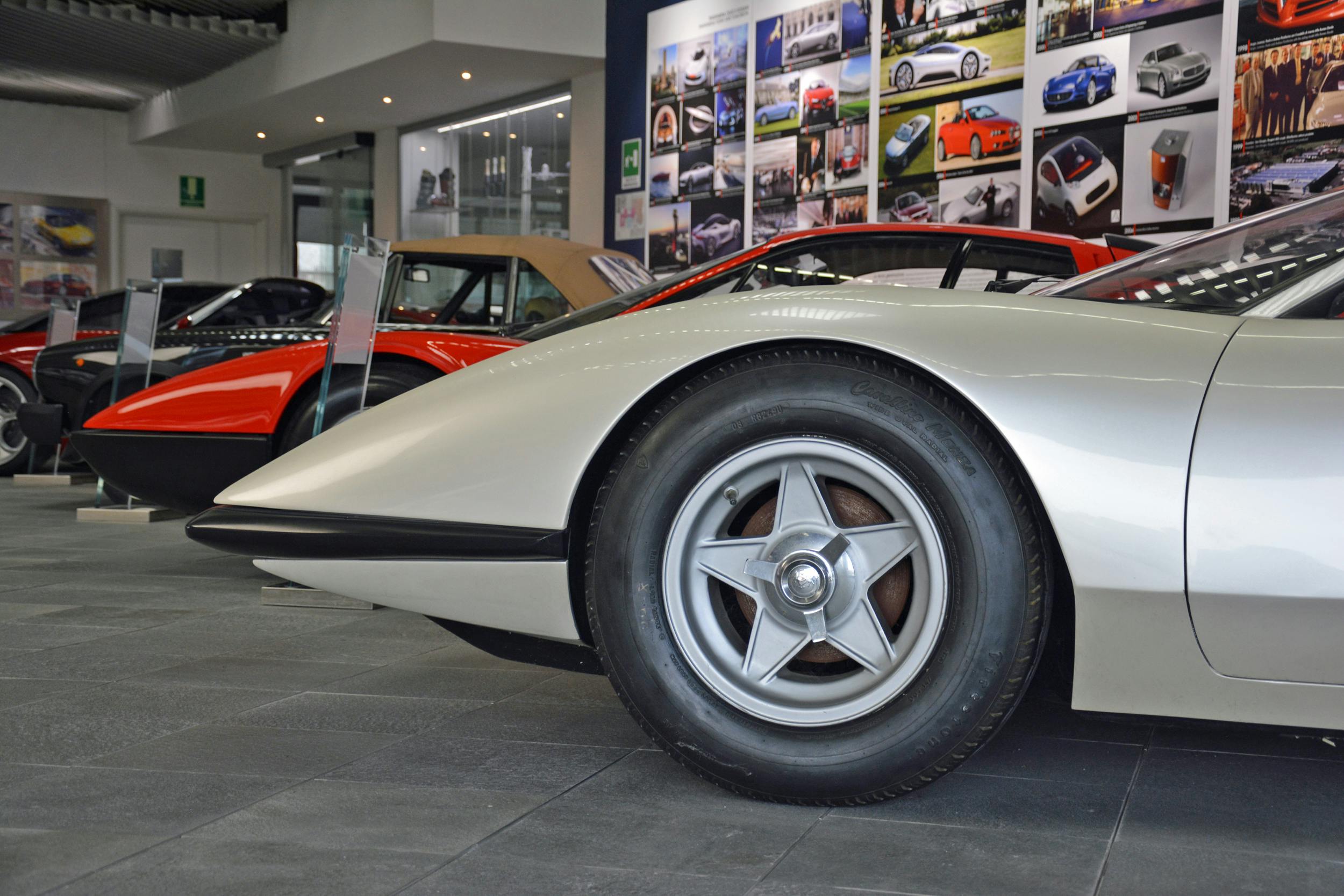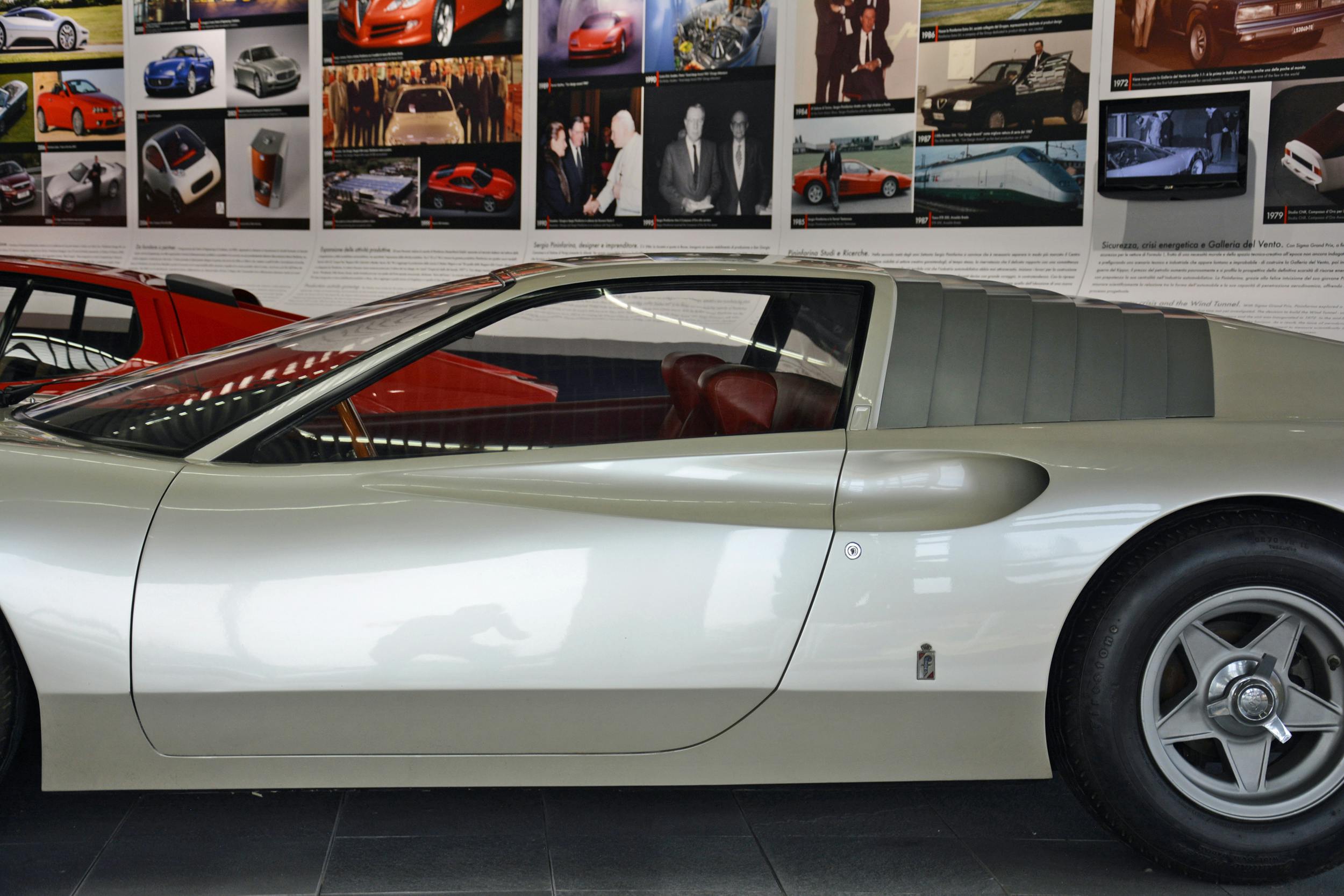Media | Articles
This 1968 Ferrari P6 prototype is “the mother of all Berlinettas”
“It’s the mother of all Berlinettas,” asserted Paolo Pininfarina, the grandson of the man who founded the company that bears his name, as he walked around the 1968 Ferrari P6 prototype.
Nearly as unknown as if it had never existed, this unique concept car is displayed in the lobby of the company’s headquarters on the outskirts of Turin, Italy. It’s the missing visual link between Dino’s shapely 206 and 246 models and boxier coupes like the flat 12-powered Berlinetta Boxer.
Leonardo Fioravanti, a designer who joined Pininfarina as a young man in 1964 and later became the head of Fiat’s Centro Stile, played an influential role in the P6’s creation. Viewed from the front, it can almost be mistaken for a regular-production Ferrari model because its sharp, elongated nose and its rectangular Carello lights accurately previewed the design language that characterized the brand’s lineup during the 1970s. Its wheel arches jut above the low hood, suggesting the engine is elsewhere.

At first glance, these styling cues set the stage for a low-slung coupe, but the rest is much more unusual. The raked windshield flows into a roof line that’s a few inches away from earning the fastback label. What immediately stands out about the P6 is that its design gives it a more restrained appearance than previous Ferrari models, which were often as flamboyant as the man whose name they wore. And yet, it’s not boring; it’s a genuine attempt at redefining the company’s design language for the disco era.
In a way, the interior previewed the automotive industry’s on-going shift towards minimalist designs with a wide, concave dashboard that emphasizes the cabin’s width and analog gauges neatly grouped into a cluster behind the steering wheel. The long, gated gear selector is right by the driver’s knee, while the center console houses additional gauges, a handful of buttons, as well as the obligatory ashtray.
Marketplace
Buy and sell classics with confidence

Pininfarina, the company, never got around to installing a drivetrain behind the P6’s cabin; it made its debut at the 1968 edition of the Turin Motor Show as a rolling chassis. Pininfarina, the man, told me the engine bay was scaled around a 3.0-liter, 60-degree V-12 that would have sent about 400 horsepower to the rear wheels via a five-speed manual transmission. The long ducts carved into both sides would have given the V-12 the air it needed to stay cool during hot Tuscan summers, but the engine compartment would have also received air from the thin grille up front via a tunnel integrated into the underbody.
This configuration had a more lasting influence on the Ferrari line-up than any of the P6’s styling cues. At the time, Enzo Ferrari passionately loathed the idea of mid- and rear-engined cars. He described the layout as “putting the oxen behind the cart.” I can’t imagine what he must have thought about the millions of rear-engined Fiats chaotically zig-zagging across Italy, or of Porsche’s then-young 911. Many of his company’s race cars were mid-engined, but they were designed exclusively for track use. The aforementioned Dino models were too, and that partly explains why they wore a different name.
Outlandish concept cars were a dime a dozen in the late 1960s as automakers and design houses attempted to predict what the future would look like. Putting the P6 in the same basket as the Batmobile-like 1968 Dodge Charger III and the Hot Wheels-esque 1967 Ford Allegro II wouldn’t be fair, though. Pininfarina imagined it as a design study that could have morphed into a production model with only minor changes if needed. Ferrari didn’t want it, however, so it remained a one-off.
“It changed completely,” Pininfarina summed up, hinting he likes the Berlinetta Boxer better than the P6. The front end evolved, it gained a wide vent plus a pair of pop-up headlights, and its rear end got lower to achieve a sleeker profile. Significantly, the rear decklid became flat but it was bookended by flying buttresses that echoed the P6’s almost bread van-like silhouette. While a flat-12 replaced the V-12, Ferrari chose to keep the concept’s mid-engined layout, and this time it wasn’t ashamed of putting its name on it.
More than five decades later, I’m impressed by the P6’s build quality. I’ll let you in on a secret: most of the flashy concepts you see enjoying their 15 minutes of fame at auto shows around the world are normally not very well built. Keep in mind they’re one-off models made largely by hand using one-of-a-kind parts; they don’t need to withstand 200,000 miles of commuting and no one is worried about paying for warranty claims. When you catch up with them in a museum 10-plus years after their big debut, they’re often falling apart. In contrast, the P6 doesn’t feel any more or less solid than the average Italian car made in the 1960s. It’s practically begging for someone like Jim Glickenhaus to drop in a V-12 and get the P6 hustling down some country road.










































